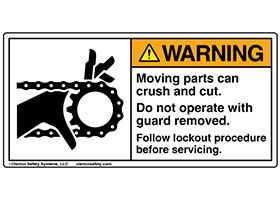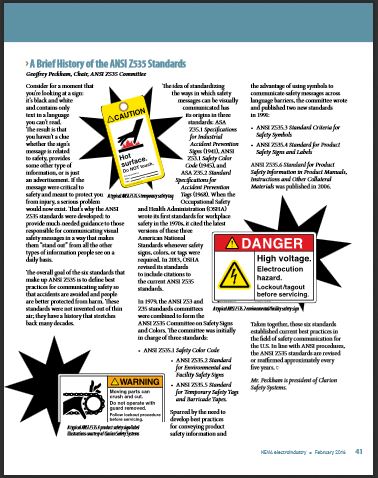A Brief History of ANSI Z535
Posted by Bethany Savage | 16th Feb 2016

If you’re tasked with product safety, you’re likely well-aware of ANSI Z535, the committee responsible for the primary safety label standard in the U.S.
But, do you know why the ANSI Z535 standards were developed – and why they’re such an important guide for you to rely on for your safety label’s design?
You’ll want to read our CEO Geoffrey Peckham’s article in the National Electrical Manufacturers Association’s (NEMA) latest electroindustry (ei) magazine.
Geoffrey uses his expertise to explain how the ANSI Z535 standards provide much-needed guidance to those responsible for communicating visual safety messages in a way that makes them “stand out” from all the other types of information people see on a daily basis.
The overall goal of the six standards that make up ANSI Z535 is to define best practices for communicating safety so that accidents are avoided and people are better protected from harm. The article explores the history of the standards – which stretches back many decades – and how they’ve developed to establish today’s current best practices.
Want to learn more about ANSI Z535 and latest developments in product safety labeling? Watch our video on how the ANSI Z535 standards use colors and signal words to convey severity levels on safety signs, labels, tags and markings. You can also visit our online Learning Center for more key topics that effect today’s product safety labels.
